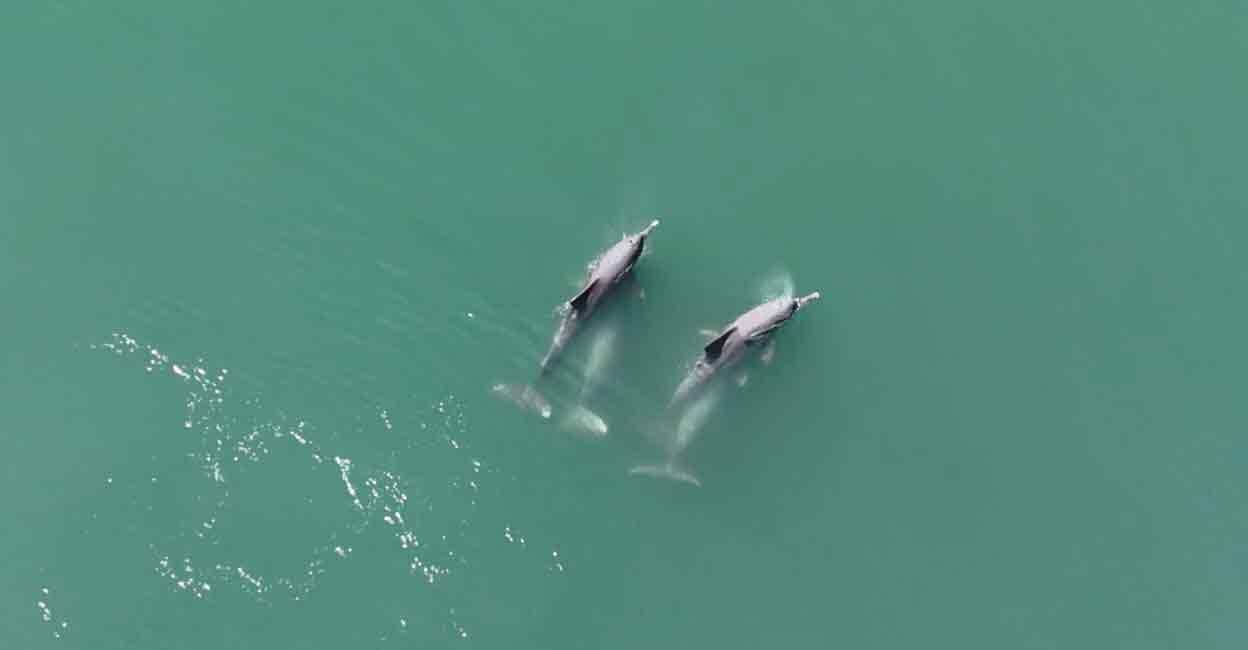Kochi: In a first-of-its-kind academic exercise, a team of researchers from ICAR-Central Institute of Fisheries Technology (ICAR-CIFT) in Kochi has successfully documented the mating behaviour of the Indian Ocean Humpback Dolphin using drone technology. The 2024-25 study has resulted in the first-ever video documentation of humpback dolphin mating behaviour in Asia.
The study conducted off the coast of Kochi involved drone-based surveys observating a pod of four dolphins. The team recorded a three-minute-long video showcasing courtship and mating behaviour, marking an important milestone in marine mammal behavioural research in the country.
The video, which includes visible mating activity lasting approximately 24 to 29 seconds, also revealed distinctive pre-copulatory behaviours. Researchers observed the characteristic circular swimming patterns commonly associated with humpback dolphin mating, capturing a complete copulatory cycle on film for the first time.
In India, all marine mammals, including the humpback dolphin (locally known as Paandan Panni), are protected under Schedule I of the Wildlife (Protection) Act of 1972. The species is listed as “Endangered” on the IUCN Red List due to ongoing threats to its survival.
The documentation was part of a national project conducted under the Pradhan Mantri Matsya Sampada Yojana (PMMSY), aimed at collecting baseline data on marine mammal populations in
Indian waters. According to Dr. George Ninan, Director of ICAR-CIFT, the drone footage provides critical insights into the reproductive and social behaviour of these elusive cetaceans. It will be instrumental for future conservation-focused studies. He added that drone-based observation offers a non-intrusive method to gather accurate data on marine mammals in their natural habitat without disturbing their behaviour.
The research team was led by senior scientist Dr Prajith K K, and included Dr Paras Nath Jha, Dr Rithin Joseph, Dr Dhiju Das, Rishikesh, Immanuel, and Abu Tahir Sha. The findings have been published in the international journal Regional Studies in Marine Science.

